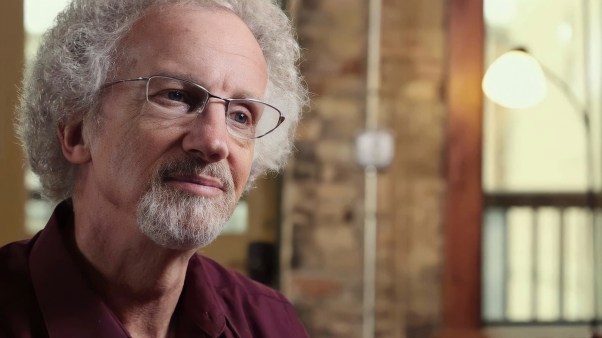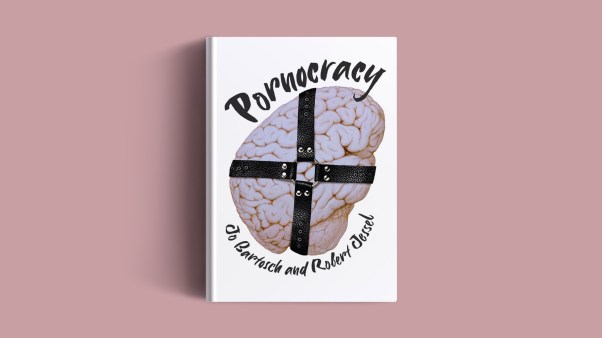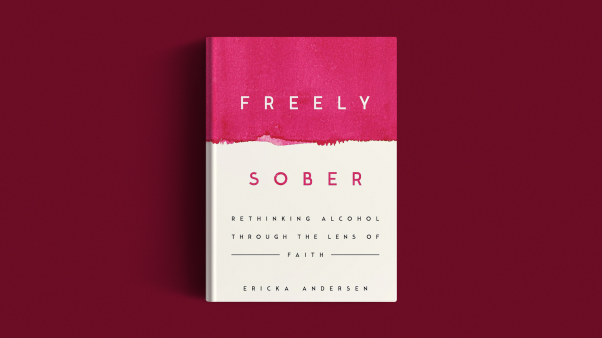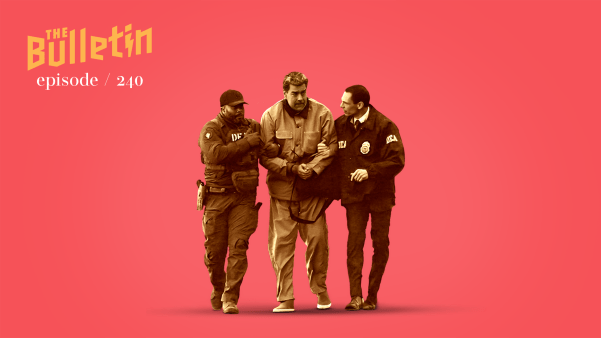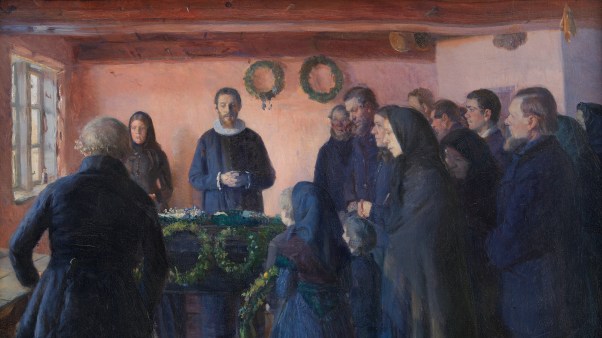On a recent trip to Egypt, the chefs at our hotel put out a remarkable buffet of culinary delights presented with both excellent taste and exquisite aesthetics.
One of our group members served onto his plate a beautiful spread: a cucumber disc topped with a triangle of cheese, a baby tomato, and a swirl of what looked like a dessert mousse. Sitting back at our table, he took a bite, and his eyes went wide as he grimaced. “What is this?!” he cried. That sweet mousse turned out to be liver pâté—not at all what he was expecting!
It’s the time of the year when many Christians embark on a new Bible reading plan. Reading through the Bible from cover to cover is a wonderful practice that exposes us to its less-familiar passages. We may discover new treasures along the way, tucked between the stories we know.
But we may also encounter passages we’d rather spit out of our mouths, like my friend’s liver pâté. Expecting inspiration, we may instead find hard words, troubling scenes, or confusing episodes. Especially if we hoped for an endorphin-generating Bible study—a “feel-good” devotional to carry us through our day—we can often find ourselves disillusioned.
As a Bible scholar, I’ve devoted my life to reading and understanding the Scriptures. I’ve watched the pages of the Bible come alive over and over again. Even so, I still encounter passages that trouble me. But I keep in mind something another Bible scholar and friend of mine, Esau McCaulley, once said—which is that we should engage with such difficult passages in the same way Jacob interacted with the angel in Genesis 32.
After a lengthy absence, Jacob was heading home to Canaan. He was nervous about running into his brother, Esau. When he left, things had been tense, and Jacob wasn’t sure how Esau would receive him when he returned. The night before their encounter, an angel surprised Jacob, and the two of them wrestled until daybreak—at which time the angel asked Jacob to let go of him. That’s when Jacob replied, “I will not let you go until you bless me” (v. 26).
Jacob knew he was encountering a heavenly being from the divine realm, and he didn’t want to miss an opportunity to receive a blessing from the Lord. And at that particular moment, he knew he would need it to have the courage to face his brother the very next day.
What if we treated the Bible like this? What if, whenever we wrestled with a troubling biblical passage, we adopted the same approach as Jacob? Understanding that the Scripture is divinely inspired and God-breathed, what if we said, I will not let go of this until it blesses me?
It’s far easier to throw up our hands and walk away from the text, but if we persist, we may find richer inspiration than we ever expected.
Three Keys to Wrestling with the Old Testament
In my experience, even the most difficult passages (maybe especially those passages) can be a source of blessing when we persist in trying to understand them. The problem is that many people struggle to understand the Bible because they were never really taught how to engage with it. So, with that, I’d like to share three keys to go about interpreting these tricky passages:
1. Consider the historical and cultural context. Like it or not, the Bible was not written to us or about us. Yes, it is God’s word for us, but the events it describes took place far from the time and place most of us call home. Even for those living in “Bible lands” today, thousands of years stand between us and the Bible.
That means reading the Bible is not only a cross-cultural experience; it also involves time travel. That’s why it helps when we know something about the history of this region. If we take the time to consider the daily lives of ordinary men and women—their concerns and challenges, their hopes and values—then we can enter into their stories more easily. Some modern readers are concerned that if they focus on history, the Bible will become less devotionally inspiring. Yet, time and again, I’ve found the opposite to be true. When I better understand the gritty realities of ancient times, I can see how much we have in common with ancient people. God still meets us in our mess today, just like he met them in theirs.
One way to learn the historical and cultural contexts of the Bible is through resources like the NIV Cultural Backgrounds Study Bible or the Zondervan Illustrated Bible Backgrounds Commentary series. Both contain rich, full-color images and are loaded with information to help you make sense of what is happening in the world behind the text.
2. Pay attention to the literary design of the passage. To focus on the scripture as literature does not mean we dismiss its historicity—it simply means we recognize that the Bible is an expertly crafted literary text. Scripture presents an inspired interpretation of history in a deliberate format designed to highlight its key themes.
As you read, take note of how the author describes people and places. Notice whether the narrative unfolds chronologically, and which scenes are placed side-by-side. Resources like videos from the Bible Project, freely available online, can help alert you to how a book is crafted.
In other words, read not just for the facts, but also to appreciate the artistry of the biblical authors. Carried along by the Holy Spirit, these writers are creating a stunning work of art that has stood the test of time.
3. Read with a diverse community. Some passages may strike us as odd, or even objectionable, because of our cultural context or life experience. When we read with others, we can pool our knowledge, our ideas, and even our questions to help us tackle difficult texts. Over the years, I have learned from other teachers and pastors and even from student questions and observations when I’m teaching a class.
In recent years, I’ve made a concerted effort to read the insights of the global church. It’s a gift to learn alongside men and women from different contexts, because their cultural vantage points allow them to see things that I miss and to explain matters that are unfamiliar to me.
A few resources I’m grateful for are Langham Global Library, the searchable database at Every Voice, and the Translation Insights and Perspectives website. These have significantly broadened my perspective by helping me read the Bible with others from around the world.
Why Would God Try to Kill Moses?
One passage that has baffled me is tucked away in Exodus 4. It’s not the sort of passage that comes up in sermons or Sunday school lessons, and I doubt you’ve read a devotional on it. In fact, it’s such a short story that if your mind wanders a bit while you’re reading, you might even miss it. But if you’re paying attention, this one is a bit shocking.
To set the stage, God has already met Moses at Mount Sinai in the burning bush and commissioned him to go to Egypt to bring his people out of slavery. Moses takes leave of his wife’s Midianite family and begins the journey back to Egypt with his wife and sons. That’s when the unexpected happens:
At a lodging place on the way, the Lord met Moses and was about to kill him. But Zipporah took a flint knife, cut off her son’s foreskin and touched Moses’ feet with it. “Surely you are a bridegroom of blood to me,” she said. So the Lord let him alone. (At that time she said “bridegroom of blood,” referring to circumcision.) (v. 24–26)
Why did God try to kill Moses while he’s in the middle of obeying? How did Zipporah know exactly what to do? Why did this circumcision change God’s mind? Why isn’t Moses’ son already circumcised? Why is this strange story important enough to include in this Book?
These were only some my questions. Based on past experience, I expected to find inspiration—if I dug deeply and wrestled with the text like Jacob with the angel—and indeed, I did!
Applying the Three Keys to the Zipporah Story
First, I considered the historical and cultural background of the story. Zipporah is the daughter of a Midianite priest. She has grown up around rituals. Circumcision was practiced by the Hebrews as well as by the Egyptians—but not in the same way or at the same time, and certainly not with the same meaning.
While God instructed the Hebrews to circumcise infants when they were just eight days old (Gen. 17:12), the Egyptians circumcised at puberty—and the rite did not appear to have a religious significance to them. For reasons unknown to us, it appears Moses had neglected to circumcise his own sons, which put his family on the outside of God’s covenant with Abraham.
Second, I learned the phrase “bridegroom of blood” may have a broader meaning. The Hebrew word hatan (“bridegroom” in NIV) can refer to any male relative by marriage, not just the groom.
Although the NIV specifies the pronouns, the Hebrew text is more ambiguous. When it says that she touched “Moses’” feet with the foreskin, the Hebrew is unclear as to whose feet it refers: her son’s feet, Moses’, or the Lord’s? But since her son was her relative by birth, rather than marriage, she was most likely speaking either to Moses or to his God, Yahweh, with whom she had entered into a relationship by marriage.
Not only that, but Zipporah’s statement, “Surely you are a bridegroom of blood to me,” had ritual significance, like the one wedding officiants today use when saying, “I now pronounce you husband and wife!” Likewise, Zipporah was declaring that her family belonged to Yahweh.
Third, and most importantly, as I spent time in the literary context of this odd passage, I found many connections that helped me make sense of it.
Before this scene, God had just told Moses to tell Pharaoh, “This is what the Lord says: ‘Israel is my firstborn son, and I told you, “Let my son go, so he may worship me.” But you refused to let him go; so I will kill your firstborn son’” (Ex. 4:22–23).
Moses was born a Hebrew but adopted by the daughter of Pharaoh. We don’t know whether she had other children, but if not, Moses may have occupied the role of her firstborn son. As Moses grew into adulthood, he seemed uncertain about his identity. He was not accepted by the Hebrews or by the Egyptians—and when he arrived in Midian, he did not introduce himself. It was only in his encounter with Yahweh at the burning bush that his identity was clarified.
However, if Moses did not circumcise his sons, then he had failed to take the only necessary step to identify himself and his family as Hebrews. Moses could not afford to return to Egypt with an uncertain identity—and so he would not be exempt from God’s ultimatum to Pharaoh.
Later, Moses would instruct the Hebrews regarding the Passover ceremony that would protect their firstborn sons when the angel of the Lord struck. Recall that to participate in the Passover, all the males in the family had to be circumcised (Ex. 12:48). So, Moses was about to command others to do what he had not done himself.
So back in the desert, Yahweh confronted Moses to ensure his full identification with the Hebrews. Zipporah, like the midwives and the other women in Moses’ infancy narrative, stepped in to rescue him from danger (Ex. 1:17; 2:1–10). As a woman who saved Moses, Zipporah is the bookend to the Moses saga. After this, the narrative then pivots to Yahweh’s rescue of Israel.
Learning to Eat Liver
Liver is an acquired taste with certain health benefits. If my friend on my study tour to Egypt had been adequately prepared, he may have been able to appreciate it. The Bible is an acquired taste too. Reading it well requires certain skills, experience, and commitment. My best advice whenever you come to a difficult passage is this: Determine not to let it go until it blesses you.
Carmen Joy Imes is associate professor of Old Testament at Biola University and author of Bearing God’s Name and Being God’s Image. She releases weekly “Torah Tuesday” videos on YouTube.








